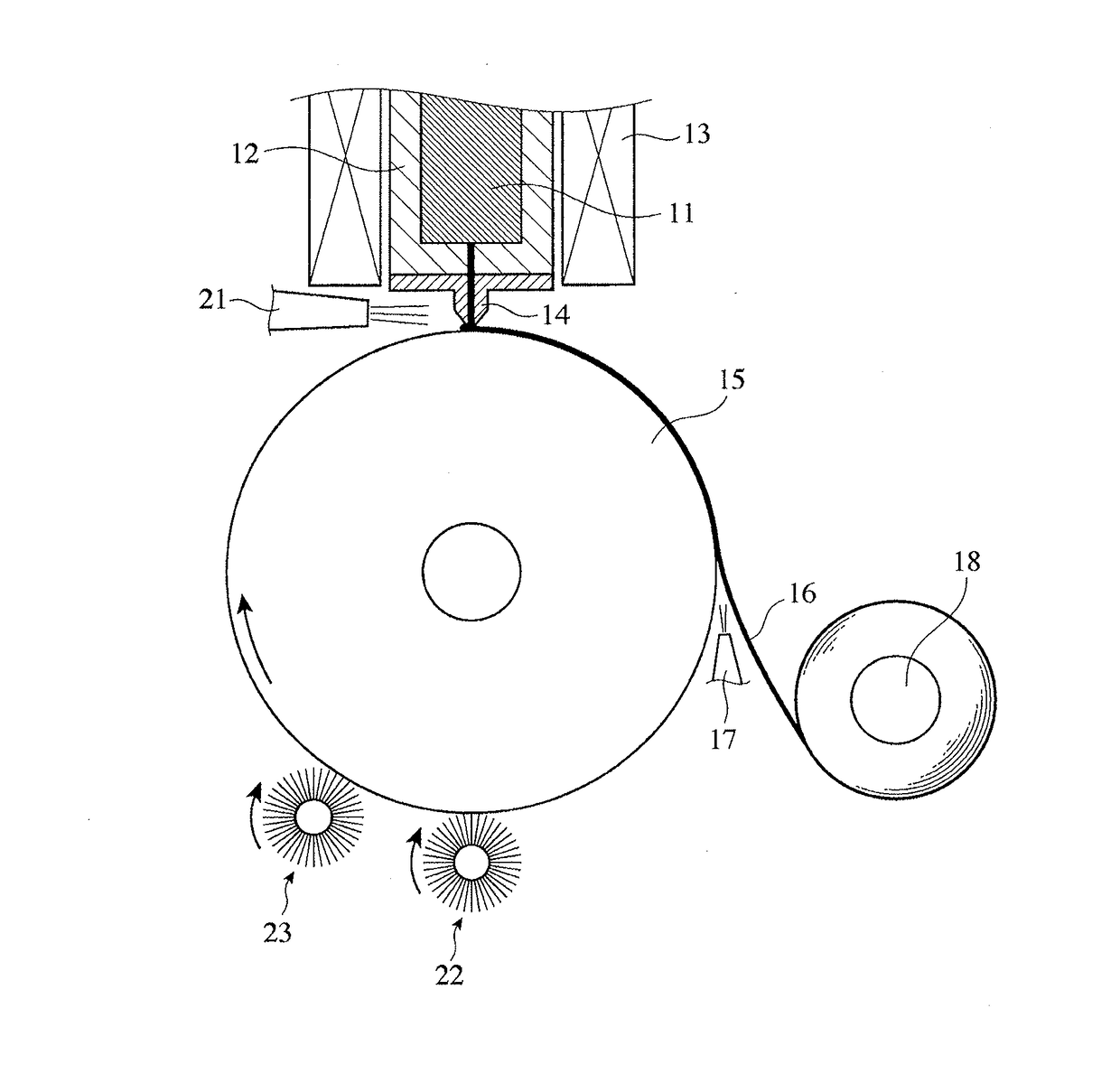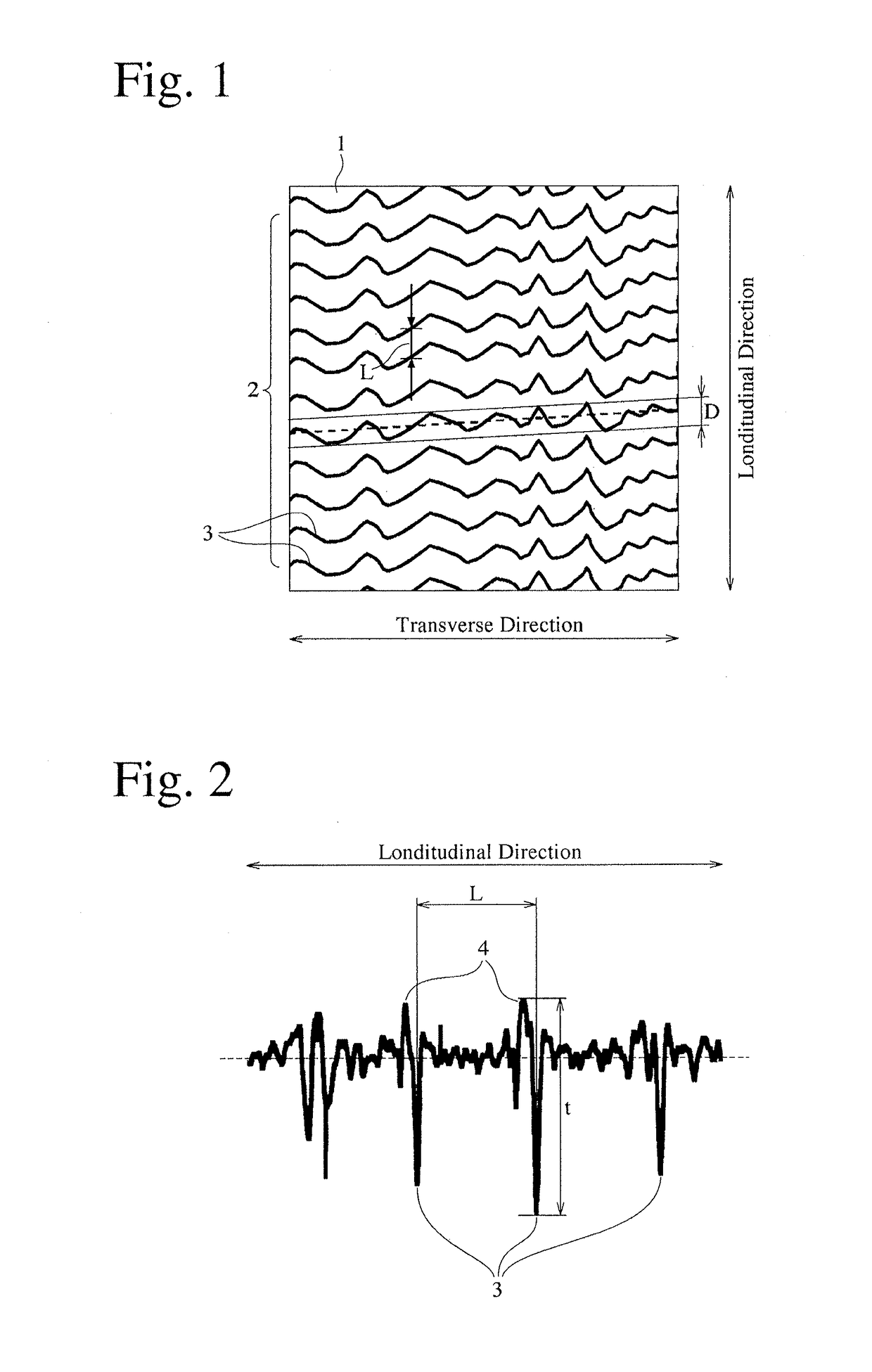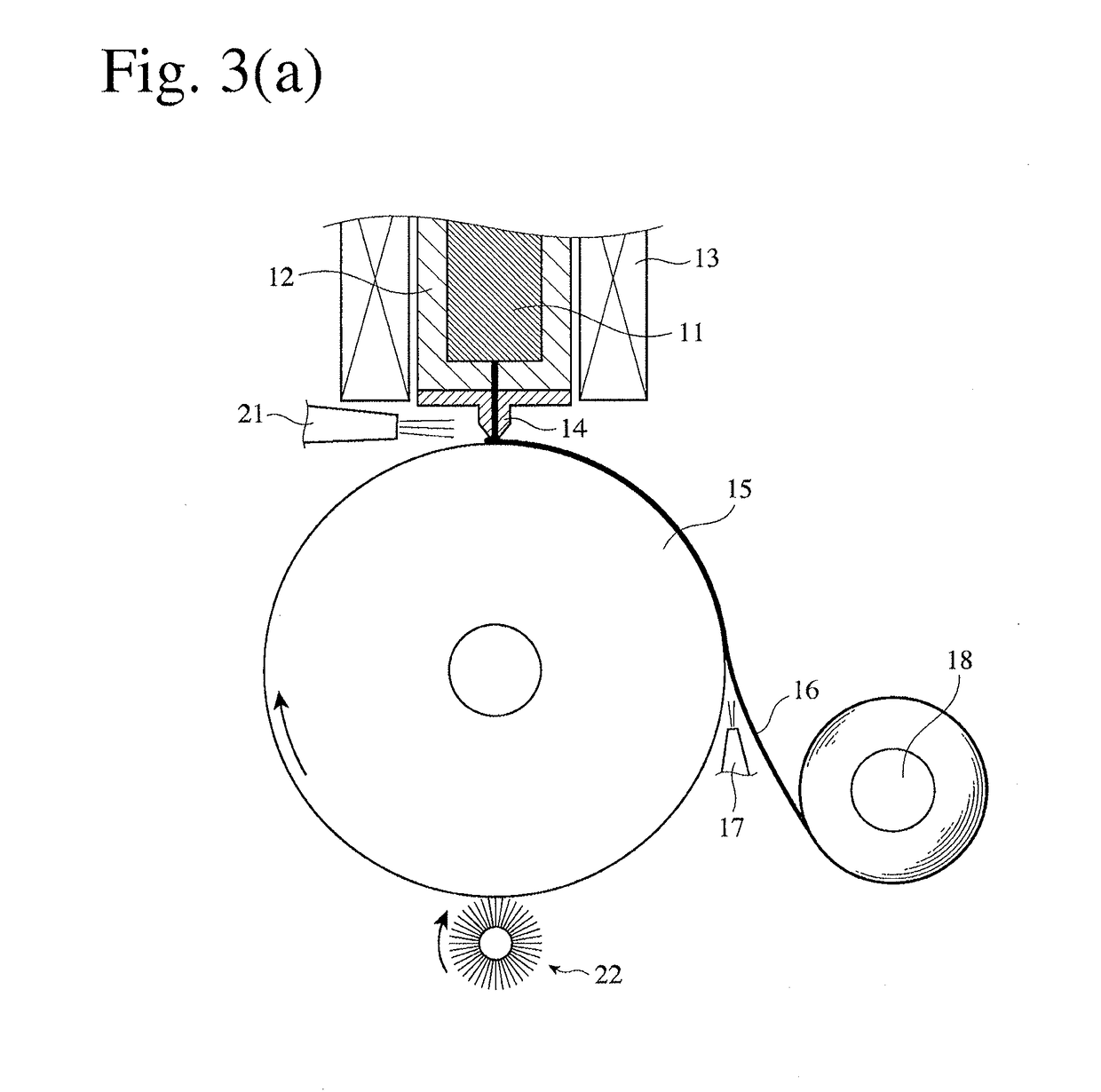Rapidly quenched fe-based soft-magnetic alloy ribbon and its production method and core
a soft-magnetic alloy and fast technology, applied in the field of cores, can solve the problems of large core loss of fe-based amorphous alloys, low productivity of laser scribing methods, and increased core loss, and achieve the effect of reducing core loss
- Summary
- Abstract
- Description
- Claims
- Application Information
AI Technical Summary
Benefits of technology
Problems solved by technology
Method used
Image
Examples
example 1
[0057]In the apparatus shown in FIG. 3(a), a ceramic-made nozzle 14 having a slit-shaped opening of 50 mm in length and 0.6 mm in width was used, with the gap between a tip end of the melt nozzle 14 and a cooling roll 15 being 250 μm. The water-cooling roll 15 made of a Cu—Cr—Zr alloy was rotated at a peripheral speed of 25.5 m / s. While ejecting a carbon dioxide gas at 1250° C. from a heating nozzle 21, an alloy melt at 1300° C., which comprised 11.5 atomic % of B, 9.5 atomic % of Si and 0.3 atomic % of C, the balance being substantially Fe and inevitable impurities, was ejected from the melt nozzle 14 onto the rotating water-cooling roll 15, to produce an Fe-based amorphous alloy ribbon of 50 mm in width and 24.3 μm in average thickness. During the production of the Fe-based amorphous alloy ribbon, the transverse temperature distribution of the melt nozzle 14 was 1200° C.±10° C., extremely uniform.
[0058]During the production of the Fe-based amorphous alloy ribbon, a wire brush roll...
examples 2-19
[0064]A ceramic-made nozzle 14 having a slit-shaped opening of 30 mm in length and 0.5-0.7 mm in width was used in the apparatus shown in FIG. 3(a), with a gap of 150-300 μm between a tip end of the nozzle 14 and a cooling roll 15. The water-cooling roll 15 made of a Cu—Be alloy was rotated at a peripheral speed of 20-35 m / s. While ejecting a carbon dioxide gas at 1190° C. from the heating nozzle 21, each alloy melt having the composition (atomic %) shown in Table 2 at 1250-1350° C. was ejected from the melt nozzle 14 onto the rotating water-cooling roll 15, to produce an Fe-based amorphous alloy ribbon of 30 mm in width. During the production of the Fe-based amorphous alloy ribbon, a transverse temperature distribution in the nozzle 14 was as extremely uniform as 1200° C.+10° C.
[0065]During the production of the Fe-based amorphous alloy ribbon, a wire brush roll 11 having stainless steel wires of 0.03 mm in diameter was rotated at a peripheral speed of 4 m / s in an opposite directio...
examples 20-39
[0071]A ceramic-made melt nozzle 14 having a slit-shaped opening of 30 mm in length and 0.5-0.7 mm in width was used in the apparatus shown in FIG. 3(a), with a gap of 150-300 μm between a tip end of the melt nozzle 14 and a cooling roll 15. The water-cooling roll 15 made of a Cu—Be alloy was rotated at a peripheral speed of 20-35 m / s. While ejecting a carbon dioxide gas at 1250° C. from a heating nozzle 21, each alloy melt having the composition (atomic %) shown in Table 4 at 1250-1350° C. was ejected from the melt nozzle 14 onto the rotating water-cooling roll 15, to produce an Fe-based amorphous alloy ribbon of 30 mm in width. During the production of each Fe-based amorphous alloy ribbon, a transverse temperature distribution in the melt nozzle 14 was as extremely uniform as 1200° C.±10° C.
[0072]During the production of each Fe-based amorphous alloy ribbon, a wire brush roll 11 having stainless steel wires of 0.04 mm in diameter was rotated at a peripheral speed of 4 m / s in an op...
PUM
| Property | Measurement | Unit |
|---|---|---|
| temperature | aaaaa | aaaaa |
| temperature | aaaaa | aaaaa |
| roughness depth Rmax | aaaaa | aaaaa |
Abstract
Description
Claims
Application Information
 Login to View More
Login to View More - R&D
- Intellectual Property
- Life Sciences
- Materials
- Tech Scout
- Unparalleled Data Quality
- Higher Quality Content
- 60% Fewer Hallucinations
Browse by: Latest US Patents, China's latest patents, Technical Efficacy Thesaurus, Application Domain, Technology Topic, Popular Technical Reports.
© 2025 PatSnap. All rights reserved.Legal|Privacy policy|Modern Slavery Act Transparency Statement|Sitemap|About US| Contact US: help@patsnap.com



